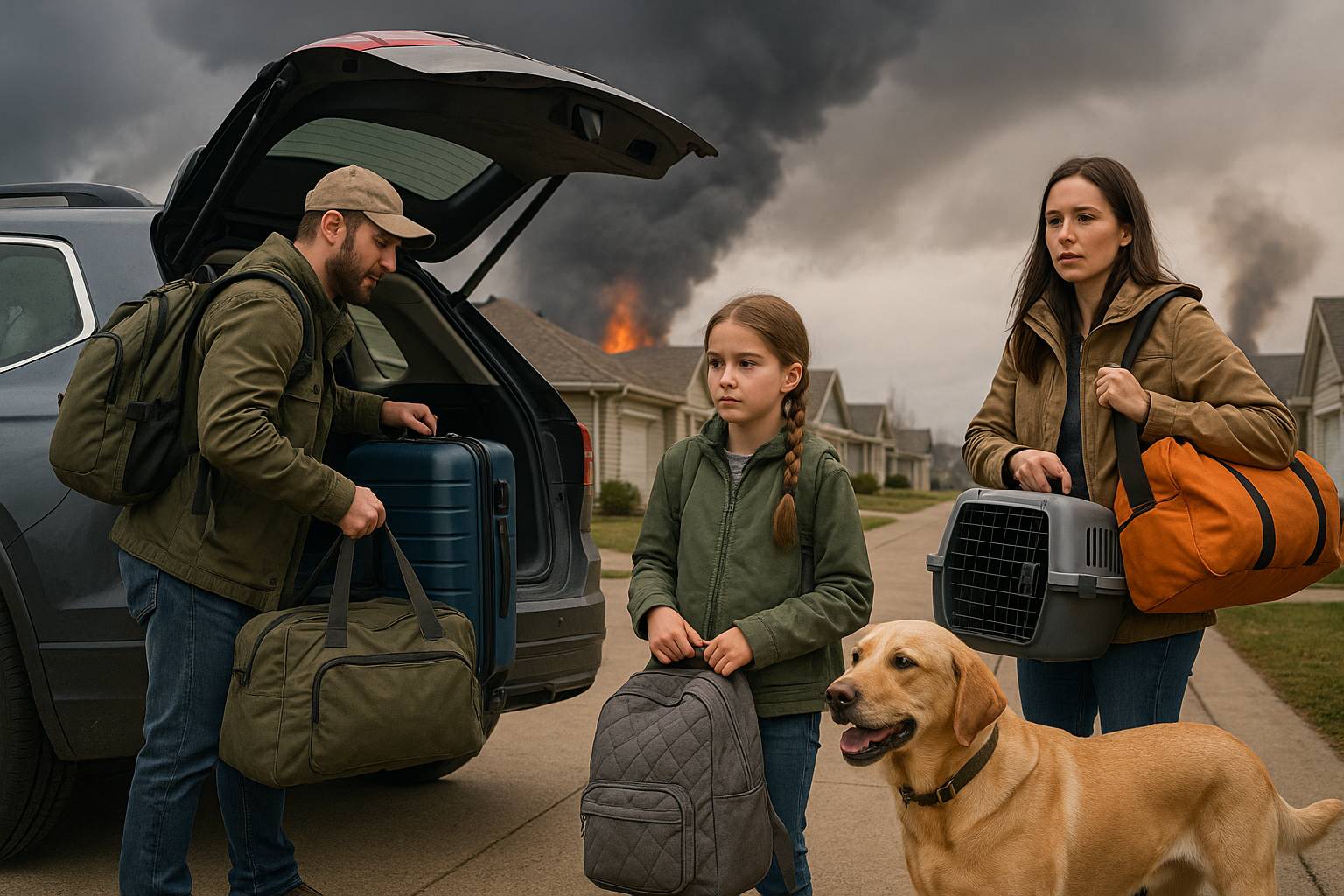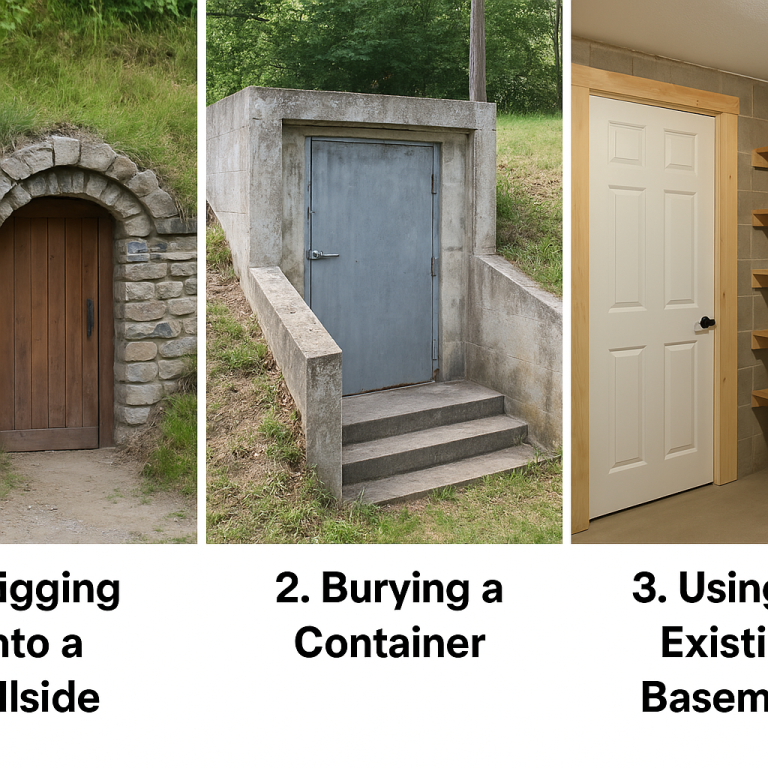For most Canadian preppers, the focus is on staying put—building supplies, hardening the home, and riding out whatever comes. But sometimes, the wisest and safest move is to leave. Whether it’s a raging wildfire in Alberta, an ice storm that cripples Ontario’s grid, or flash floods in the Maritimes, the reality is this: you may not always be able to bug in.
Evacuation doesn’t just mean throwing your bug-out bag in the trunk and hoping for the best. It’s a carefully orchestrated process that considers timing, gear, routes, transportation, destinations, and communication. In this article, we’ll break down the full range of logistics you’ll need to plan ahead so you’re not caught flat-footed when the order—or the instinct—comes to leave.
Why Evacuation Planning Is Critical in Canada
Canada is vast, sparsely populated in many regions, and subject to some of the harshest weather and environmental extremes on the planet. Recent events have proven how unpredictable and devastating emergencies can be:
- Fort McMurray Wildfires (2016 & 2023): Tens of thousands forced to leave with little warning, highways clogged, fuel shortages widespread.
- Ottawa/Gatineau Flooding (2017 & 2019): Entire neighborhoods underwater, forcing families to abandon their homes for weeks.
- Quebec Ice Storm (1998): Millions left without power for weeks in the dead of winter, with many needing to seek shelter elsewhere.
- British Columbia Floods (2021): Key highways washed out, leaving communities isolated and supply chains disrupted for months.
Each of these examples highlighted one truth: those who had a plan to evacuate early and efficiently fared far better than those who didn’t.
Step 1: Establish Clear Trigger Points
The most difficult part of evacuation is knowing when to go. Waiting too long can be deadly.
- Follow Official Orders: Always respect mandatory evacuation notices. They are issued when authorities know danger is imminent.
- Personal Triggers: Don’t rely only on government orders. Establish your own benchmarks. Examples:
- Wildfire reaches within 20 km of your area.
- Water levels within 1 metre of overtopping dikes near your home.
- Power outage extends beyond 48 hours in freezing weather.
By writing down these triggers and agreeing on them with your family, you eliminate hesitation when stress levels are highest.
Step 2: Pre-Pack, Stage, and Inventory Gear
When the clock is ticking, the last thing you want to do is scramble for gear. Pre-position supplies in layers:
- Go-Bags (72-Hour Kits): One per person, ready to grab. Include clothing for the season, food, water, first aid, medications, and identification.
- Vehicle Bins: Larger totes in the trunk with blankets, cooking gear, backup fuel, and tools.
- Pet Kits: Many evacuations get delayed because of pets. Have leashes, carriers, food, and vet records pre-packed.
- Document Kits: Copies of IDs, passports, insurance, land deeds, and medical information stored in a waterproof pouch.
Do a quarterly check to refresh food, rotate medications, and adjust for seasonal needs.
Step 3: Plan Multiple Routes (and Practice Them)
Evacuation routes in Canada are often limited by geography. Highways may funnel thousands of people at once, while secondary roads can be blocked by snow, mud, or downed trees. Always plan three options:
- Primary Route: Fastest, usually highways or major arterial roads.
- Secondary Route: Rural roads or service roads that bypass main choke points.
- Tertiary Route: Walking, ATV, snowmobile, or even canoe routes if roads fail.
Canadian Example: During the Fort McMurray wildfires, only Highway 63 southbound was available, leading to gridlock. Those who knew backroads or had pre-fueled vehicles fared far better.
Keep paper maps in every vehicle. GPS may not work, and cell towers may fail under load.
Step 4: Transportation Logistics
How you leave matters as much as where you go.
- Primary Vehicle: Maintain a designated bug-out vehicle with good tires, winter prep, and fuel topped off. Keep an extra jerry can safely stored (rotate fuel every 6 months).
- Secondary Transport: Consider a camper trailer, RV, or cargo trailer for extended supply transport. Weigh mobility vs. carrying capacity.
- Alternative Transport: ATVs, snowmobiles, and bicycles can bypass traffic jams. In river regions, a canoe or small boat can be invaluable.
- On Foot: Last resort, but always prepare for it. Keep compact backpacks for each family member that can sustain them for 72 hours.
Step 5: Communication and Coordination
Emergencies are chaotic. Families get separated. Neighbors panic. Communication planning prevents confusion.
- Family Rally Points: Choose two: one local (near home) and one regional (farther out).
- Contact Chains: Share evacuation plans with extended family or a trusted MAG (Mutual Assistance Group).
- Radios: Equip family with walkie-talkies (FRS/GMRS in Canada) or ham radios. Don’t assume cell service will work.
- Status Boards: Simple laminated cards at home or rally points can show “We left, heading to X.”
Step 6: Safe Destination Options
Where will you go? This is often overlooked. A vague idea of “we’ll head to Grandma’s” isn’t enough. Plan in detail.
- Family & Friends: Best option if you have trusted people in safer regions.
- Hotels/Motels: Viable in urban centers but will book up quickly. Always call ahead.
- Community Shelters: Reliable but crowded, with limited privacy and security.
- Bug-Out Locations: Pre-stocked cabins, rural retreats, or mutual assistance farms. Best option for serious preppers.
Always have at least two fallback destinations.
Step 7: Rehearsals and Drills
The best plan in the world means nothing if it’s never practiced.
- Quarterly Mini-Drills: Practice loading vehicles quickly. Time yourselves.
- Annual Full Drill: Evacuate with your family to a pre-arranged destination and spend a night there. Test everything from cooking to communications.
- Neighborhood Involvement: If you have a MAG, run joint drills. Assign roles for convoy driving, fuel sharing, or medical response.
Step 8: Managing During Transit
Evacuation isn’t just about leaving—it’s about surviving the journey.
- Fuel: Gas stations may be empty. Carry spare fuel and plan refuel points.
- Traffic: Expect gridlock. Leave early if possible. Keep paper maps for detours.
- Security: Be discreet. Don’t advertise your supplies. Avoid confrontations with desperate people.
- Morale: Especially with kids, keep snacks, games, and routines to reduce stress.
Step 9: Common Pitfalls to Avoid
- Overpacking: Don’t try to bring everything. Speed is more important than comfort.
- Ignoring Pets: Having no plan for animals can delay or derail an evacuation.
- Failing to Notify Others: Always let someone outside the danger zone know where you’re going.
- Not Accounting for Seasons: Evacuating in a January blizzard is a very different beast than in July wildfire season.
Final Thoughts
Evacuation logistics are about turning chaos into a controlled operation. Canadian disasters—from ice storms to wildfires—have shown us that those who plan early, pack efficiently, and leave decisively are the ones who come out on top.
Preparedness isn’t just about surviving in your home. It’s about ensuring your family’s safety wherever you need to go. By establishing triggers, staging gear, planning routes, rehearsing, and keeping your destinations clear, you’ll transform evacuation from a desperate scramble into a disciplined procedure.
When the time comes to roll out, you’ll have confidence—not confusion.




